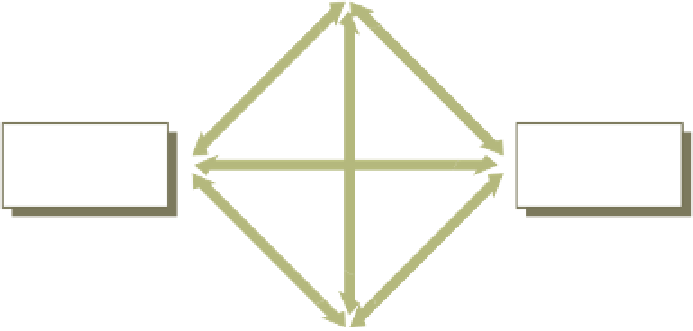Information Technology Reference
In-Depth Information
Reengineering and Continuous Improvement
To stay competitive, organizations must occasionally make fundamental changes in the way
they do business. In other words, they must change the activities, tasks, or processes they use
to achieve their goals.
Reengineering
, also called
process redesign
and
business process reengi-
neering (BPR),
involves the radical redesign of business processes, organizational structures,
information systems, and values of the organization to achieve a breakthrough in business
results. Union Bank of California, for example, decided to reengineer many of its tasks and
neering process and put operations and IT in the same organization is a real statement about
the bank's foresight about how IT can be an enabler and is such a critical function for the
bank to continue to be successful and competitive in the marketplace.” Reengineering can
cause changes of an organization's values and information systems (see Figure 2.8). Reengi-
neering can reduce delivery time, increase product and service quality, enhance customer
satisfaction, and increase revenues and profitability.
reengineering (process
redesign)
The radical redesign of business
processes, organizational struc-
tures, information systems, and val-
ues of the organization to achieve a
breakthrough in business results.
Figure 2.8
Reengineering—
Business process
redesign
Reengineering
Reengineering involves the radical
redesign of business processes,
organizational structure,
information systems, and values of
the organization to achieve a
breakthrough in business results.
Changes to
organizational
structure
Changes to
organizational
values
Changes to
information
systems
In contrast to simply automating the existing work process, reengineering challenges the
fundamental assumptions governing their design. It requires finding and vigorously chal-
lenging old rules blocking major business process changes. These rules are like anchors
weighing down a firm and keeping it from competing effectively. Table 2.1 provides some
examples of such rules.
Table 2.1
Selected Business Rules That
Affect Business Processes
Rule
Original Rationale
Potential Problem
Hold small orders until full-truckload
shipments can be assembled.
Reduce delivery costs.
Customer delivery is slow—
lost sales.
Do not accept an order until
customer credit is approved.
Reduce potential for bad debt.
Customer service is poor—
lost sales.
Let headquarters make all
merchandising decisions.
Reduce number of items carried
in inventory.
Customers perceive organization
has limited product selection—
lost sales.












